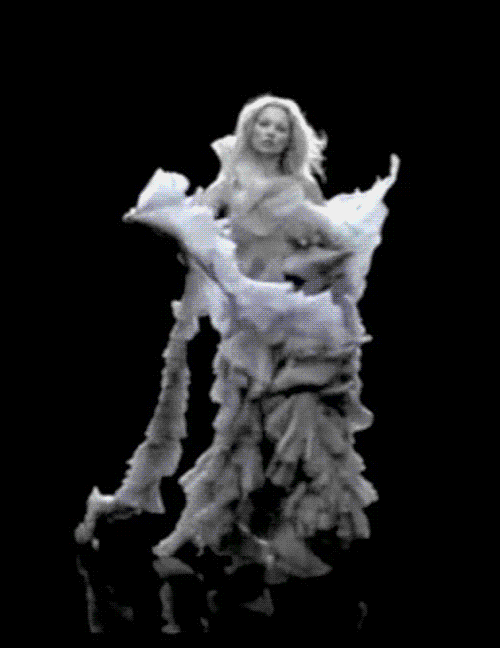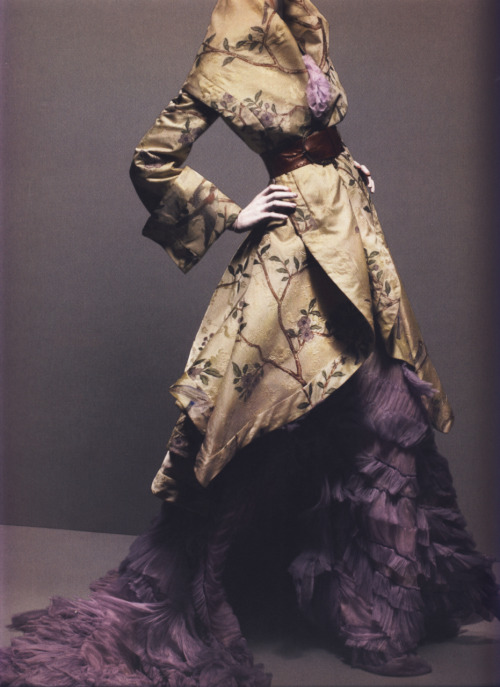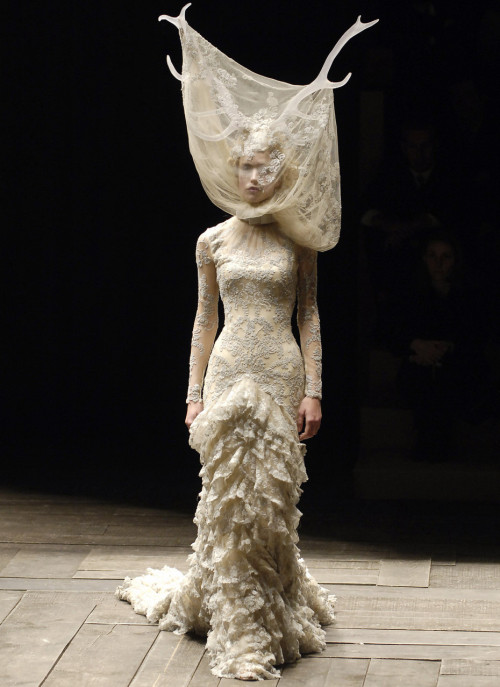After two overwhelmingly pedestrian runway
presentations, McQueen returned to form in spectacular fashion with one of his
most critically-acclaimed shows ever. Returning once again to his Scottish
roots, ‘The Widows of Culloden’ (which can be seen in full here) tackled
similar subjects to his provocative ‘Highland Rape’ collection, albeit with a
more romantic eye. Whilst the 1993 McQueen tackled the subject with ferocity
and courted controversy, the 2006 McQueen took a softer, more poetic approach.
Renowned for his romanticism, this collection is possibly one of the most
lyrical of his career, designed to tell the story of the countless widows that
resulted from the 1746 Battle of Culloden.
The show’s aesthetic was directly inspired by
the traditional outfits of the 19th century – inspiration was taken from the tiny
petticoats, elaborate ruffles and dramatic evening coats of the era. The silhouettes
of the gowns were archetypically feminine, focusing around waistlines which
were mercilessly cinched in and bustles which were added to every outfit in
order to accentuate the curves of the female form, a silhouette which McQueen
thought to be reminiscent of a classical statue. The fabrics were equally
decadent, ranging from the designer’s own family tartan through to sumptuous
black velvet and ornate brocades which almost resembled tapestries ripped from
the walls of an ancient castle.
As always, there were several references to the
classic McQueen aesthetic. The bird headpieces recalled the designer’s ornithological
fascinations whereas the punkier leanings of his opening collections were
re-introduced in a series of looks which teamed tartan with black lace to add a
contemporary feel to the collection. Lace trouser suits and sharply tailored
jackets all reminded us of the designer’s Savile Row beginnings but it was the
final few dresses that truly pushed the envelope and showed real technical
progression and conceptual progression. The first of these dresses has become one
of his most iconic, a stunning floor-length bridal gown made from intricate
white lace and completed from the waist down with a cascade of ruffles, its
accompanying veil speared and caught upon the antlers that protrude from the
model’s elegant updo. The look perfectly encompasses the underlying brutality
of the collection and adds a chilly dynamic to the show’s romantic aesthetic.
It is at once a reminder that these women are widows, that they were all
married and that they were all victimised by war.
After the final precession of stunning looks,
the lights dimmed and all attention turned towards the mysterious pyramid that
loomed centre stage. Slowly, a video projection began to play. At first it
seemed to depict only a small white glow which gradually revealed itself as the
numerous ruffles of a dress. Then it grew larger and became a ghost, the
haunting memory of the battle and its widows. Finally it was revealed to be the
iconic Kate Moss, enveloped in a tourniquet of billowing white fabric spinning
wildly as the audience clapped with delight. Not only representing the ghost of
the widows’ past, the hologram also represented the spectre of the supermodel
that had recently been assassinated by the media in the wake of the notorious ‘Cocaine
Kate’ scandal. The woman in the pyramid was defiant and so was McQueen, taking
his final bow in a T-shirt which read ‘We Love You Kate!’ The moment would soon
become one of the most important in the designer’s career and lead to a revival
of Kate’s success; it was a moment which showed friendship, loyalty and the
intention to ignore media scandal and place the emphasis back on the two things
that both did best – artistic expression and undeniable beauty.




No comments:
Post a Comment